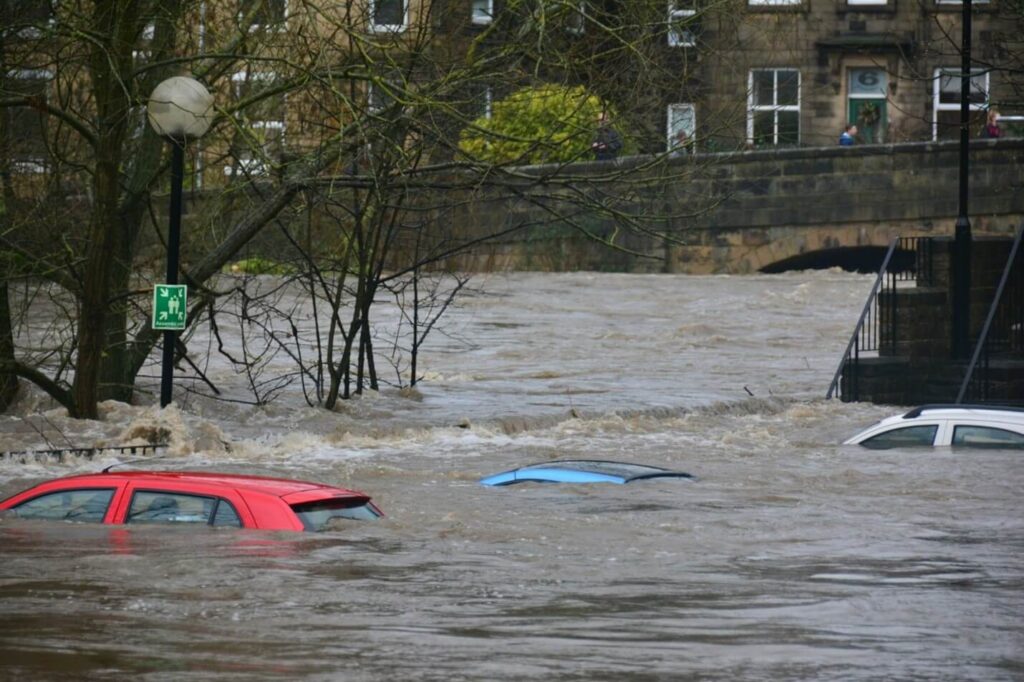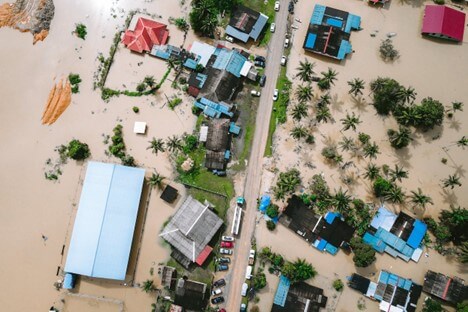
Floods are a common and sometimes severe natural disaster that can occur anywhere, putting people and communities at serious risk of severe harm. In United States, flooding is the most prominent natural disaster. A slew of atmospheric rivers devastated California in February 2024. Severe winds, flash floods, and extensive power outages are the result of the natural disaster. During these storms, the National Weather Service even issued a warning for hurricane-force winds in the San Francisco area as high as 92 mph. In light of these incidents, it is critical for people and families across the country to comprehend and put into practice appropriate flood safety measures.
Get ready for the potential flood
Taking proactive steps ahead of any flood event can improve your ability to be more prepared when the flood comes. Create a robust evacuation plan that everyone in the family should follow. Think about assembling a “go bag” filled with necessary emergency supplies, such as clothing, non-perishable food, water, and prescription drugs. Remember your animal companions; assemble a pet emergency kit and research pet-friendly lodging options in case of an evacuation.

It’s critical to understand that flood-related damages are typically something that normal insurance policies will not cover. For flood-related damages, get a flood insurance policy to protect your house. This additional security measure will be quite helpful in the event that losses from flooding occur.
Stay Attentive during Flood Watch
A flood watch indicates that weather conditions are favorable for a flood, but one has not occurred yet. During this phase, take precautionary steps to safeguard your personal belongings. Store important documents in waterproof containers, move valuables to higher levels within your home, and secure outdoor furniture and grills.

Charge electronic devices, including your mobile phone, and have a battery-powered or hand-crank radio on hand for updates in case of power outages. Being prepared during a flood watch can make a significant difference in mitigating potential damages.
Measures to follow during the flood
When flooding is expected or has already occurred, a flood warning is issued. Keep an eye out for updates and possible evacuation orders by following the local news and weather reports. If the authorities advise an evacuation, heed their advice and depart as soon as you can. It is never advisable to try driving, swimming, or walking through floodwaters because even 6 inches of standing water can cause your car to skid. Also, floodwater is often dangerous due to pollution and submerged objects.

Move to the highest floor if you find yourself in your house during a flood, but stay away from closed attics as they could trap you. If you are in a car, stay inside and only get out to the roof if the car starts to flood. Steer clear of floodwater as it could be contaminated and dangerous to your health.
What To Do After Flood
When the floodwaters subside, proceed with caution when you go back home. Await word from the local authorities regarding safety before proceeding. Wear protective clothing, such as gloves and boots, when entering your home to prevent potential hazards during cleanup.
Remember that standing water and downed power lines can cause electrocution. Avoid standing in water or wearing wet clothing when near electrical appliances or equipment, and avoid wading through floodwater. Be cautious because floodwaters may also bring in insects, snakes, or other animals into your house.
Keep a close eye out for water advisories. If one is in effect, only use bottled, boiled, or treated water for cooking or drinking.
Conclusion

Flood safety is a complex task that calls for a trifecta of planning, alertness, and wise behavior. Although the recent events in California have highlighted how unpredictable floods can be, following general safety precautions can greatly lessen the effects on people and communities. The key to successfully managing flood safety is having a thorough emergency plan, remaining informed during watches and warnings, and adhering to post-flood safety procedures. People can better safeguard their homes and loved ones against this frequent and potentially devastating natural disaster by raising awareness and being prepared.
